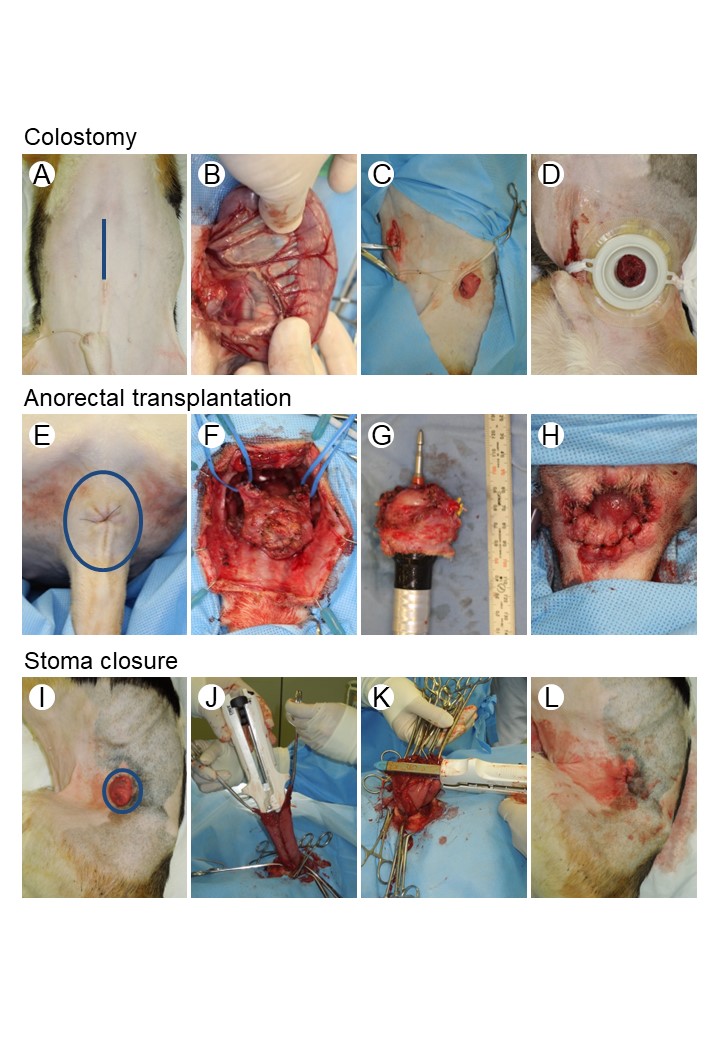Anorectal transplantation: The first long-term success in a canine model
Jun Araki1, Yuji Nishizawa2, Naoki Fujita3, Flavio Galvao4, Munekazu Naito5.
1Plastic and Reconstructive Surgery, Shizuoka Cancer Center Hospital, Shizuoka, Japan; 2Colorectal Surgery, National Cancer Center Hospital East, Kashiwa, Japan; 3Laboratory of Veterinary Surgery, Graduate School of Agricultural and Life Science, The University of Tokyo, Tokyo, Japan; 4Laboratory of Liver Transplantation and Experimental Surgery (LIM-37), Division of Liver Transplanta, Faculdade de Medicina da Universidade de São Paulo (FMUSP), Sao Paulo, Brazil; 5Department of Anatomy, Aichi Medical University, Aichi, Japan
Objective: Anorectal transplantation is a challenging procedure but a promising option for patients with weakened or completely absent anorectal function.
Summary Background Data: We constructed a canine model of anorectal transplantation, evaluated the long-term outcomes, and controlled rejection and infection in allotransplantation.
Methods: In the pudendal nerve function study, six dogs were randomly divided into two groups: transection and anastomosis, and were compared with a control using anorectal manometry, electromyography, and histological examination. In the anorectal transplantation model, four dogs were assigned to four groups: autotransplant, allotransplant with immunosuppression, allotransplant without immunosuppression, and normal control. Long-term function was evaluated by defecography, videography, and histological examination.
Results: In the pudendal nerve function study, anorectal manometry indicated that the anastomosis group recovered partial function 6 months postoperatively. Microscopically, the pudendal nerve and the sphincter muscle regenerated in the anastomosis group. Anorectal transplantation was technically successful with a three-stage operation: colostomy preparation, anorectal transplantation, and stoma closure. The dog who underwent allotransplantation and immunosuppression had two episodes of mild rejection, which were reversed with methylprednisolone and tacrolimus. The dog who underwent allotransplantation without immunosuppression had a severe acute rejection that resulted in graft necrosis. Successful dogs had full defecation control at the end of the study.
Conclusions: We describe the critical role of the pudendal nerve in anorectal function and the first long-term success with anorectal transplantation in a canine model. This report is a proof-of-concept study for anorectal transplantation as a treatment for patients with an ostomy because of anorectal dysfunction.

JSPS KAKENHI Grant (number: JP 19K18075).
[1] Anal reconstruction
[2] Functional recovery
[3] Anorectal transplantation
[4] Vascularized composite tissue allotransplantation (VCA)
[5] Preclinical animal experiment
